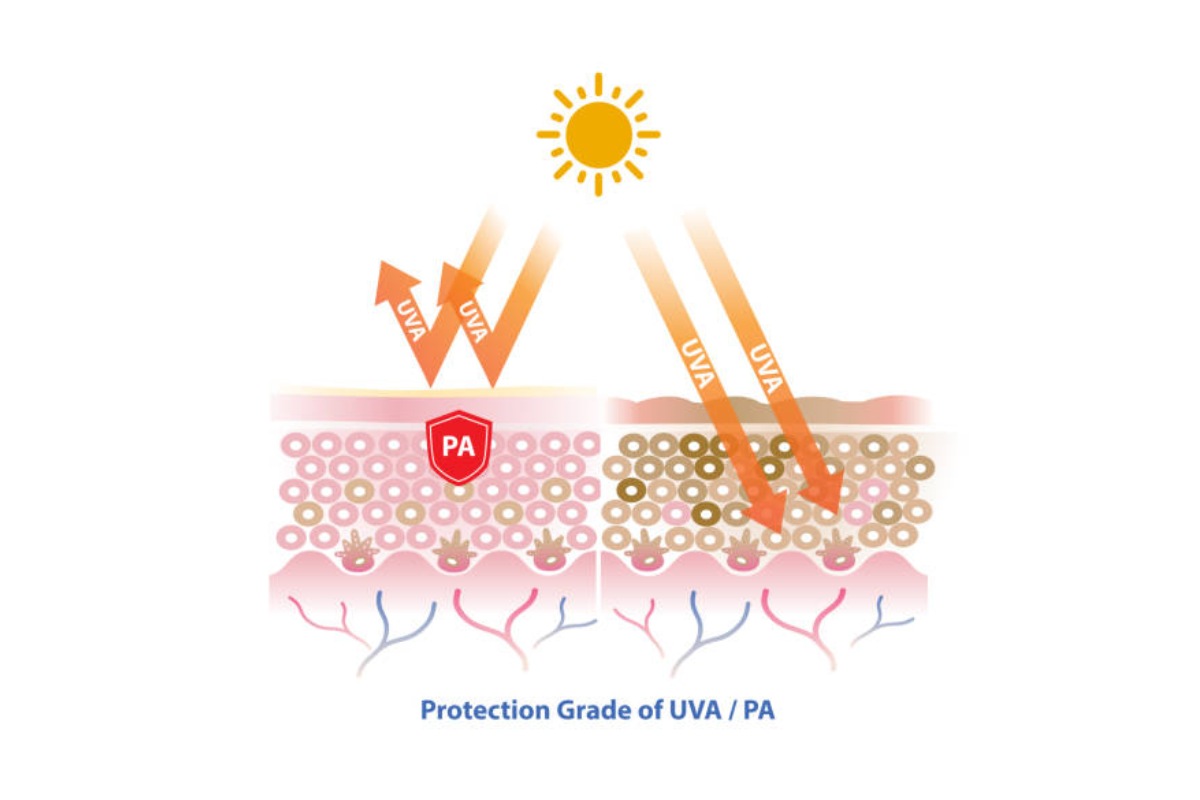PA+ Rating in Sunscreen – There is an increasing fear of skin diseases caused by excessive sun exposure, which is why there is a frenzy around high SPF and PA-rating sunscreens. Melanomas, skin ageing signs, sunburn and many other skin disorders are becoming more prevalent due to the penetration of UV rays into the skin. It is a known fact that UV rays cause 90% of premature skin ageing. This is reason enough to take care of your skin throughout the year with quality sunscreen. It is super important to use a good sunscreen and know all the essential features a good sunscreen should have.
While using sunscreen, you may have noticed that oftentimes there is an SPF and a PA rating on the sunscreen which deems it to be a quality product. You may be familiar with SPF. The sun protection factor that shields your skin from a major percentage of UVB rays. The most commonly used sunscreens have a rating of SPF 30 and can go as high as SPF 70 or even higher. However, let’s learn more about the PA rating and how you can select the appropriate sunscreen for yourself based on it.
SPF Factor
There are two kinds of UV rays that can penetrate your skin, UVA and UVB rays. The SPF factor of the sunscreen determines the protection you get from UVB rays only. However, UVA rays can also be equally damaging to your skin and can penetrate deeply. For maximum protection, you need to use broad-spectrum sunscreens (UVA + UVB) which protect your skin from both types of rays.
The PA rating is a determinant of the level of protection offered by the sunscreen against UVA rays. It stands for ‘Protection Grade of UVA rays’. It ranges from PA+ to PA++++, with the latter being the most protective against UVA rays. Usually, medical-grade sunscreens have a PA rating of four along with a higher SPF. Most countries use a maximum PA+++ rating as their limit, as the four-plus rating is found in very few products.
The PA rating is determined by scientists using a PPD (persistent pigment darkening) test. This test involves the use of UVA rays to cause persistent tanning of the skin. Each person is tested as to how long it takes the UVA rays to darken their skin. Results are then compared between people with protected and unprotected skin, and the rating for the protective sunscreen is given. It can be said that if a product’s PPD rating is 10, it can allow a person to handle 10 times as much UVA rays exposure. In simple terms, it is used as a marker to show the amount of protection you get against UVA rays.
Each PA rating means
- PA+ = Some UVA protection
- PA++ = Moderate UVA protection
- PA+++ = High UVA protection
- PA++++ = Extremely High UVA protection
Using broad-spectrum sunscreen is always ideal because you never know how much sun exposure you are getting, even on a cloudy day.
Broadly there are two types of sunscreens, chemical and mineral sunscreens. Chemical sunscreens use ingredients like avobenzone and octisalate which absorb the sun’s UV rays. Whereas mineral sunscreens have several ingredients like oxides that block and scatter the sun’s rays before reaching the skin. You must always check the label for a mention of broad-spectrum sunscreen before buying one to ensure your skin is being shielded from both types of rays.
Another important aspect of applying sunscreen is the need to reapply it every two-three hours. This way, the protective effect of any sunscreen will last for a longer time. Even if you are wearing sunscreen, it is best to limit sun exposure as much as you can by wearing layers of clothing or using caps and staying in the shade whenever possible. Your skin deserves to protect, whether you are working, running, or having fun at the beach.
This is why 82°E has come up with sunscreen SPF 40 enriched with protective patchouli leaf extracts and ceramides that are clinically proven to shield your skin from sun rays. This sunscreen drop leaves no white cast and enrich with ingredients to protect your skin. Apply it when you’re indoors or when you head out to experience the warm winter sun without fear.

